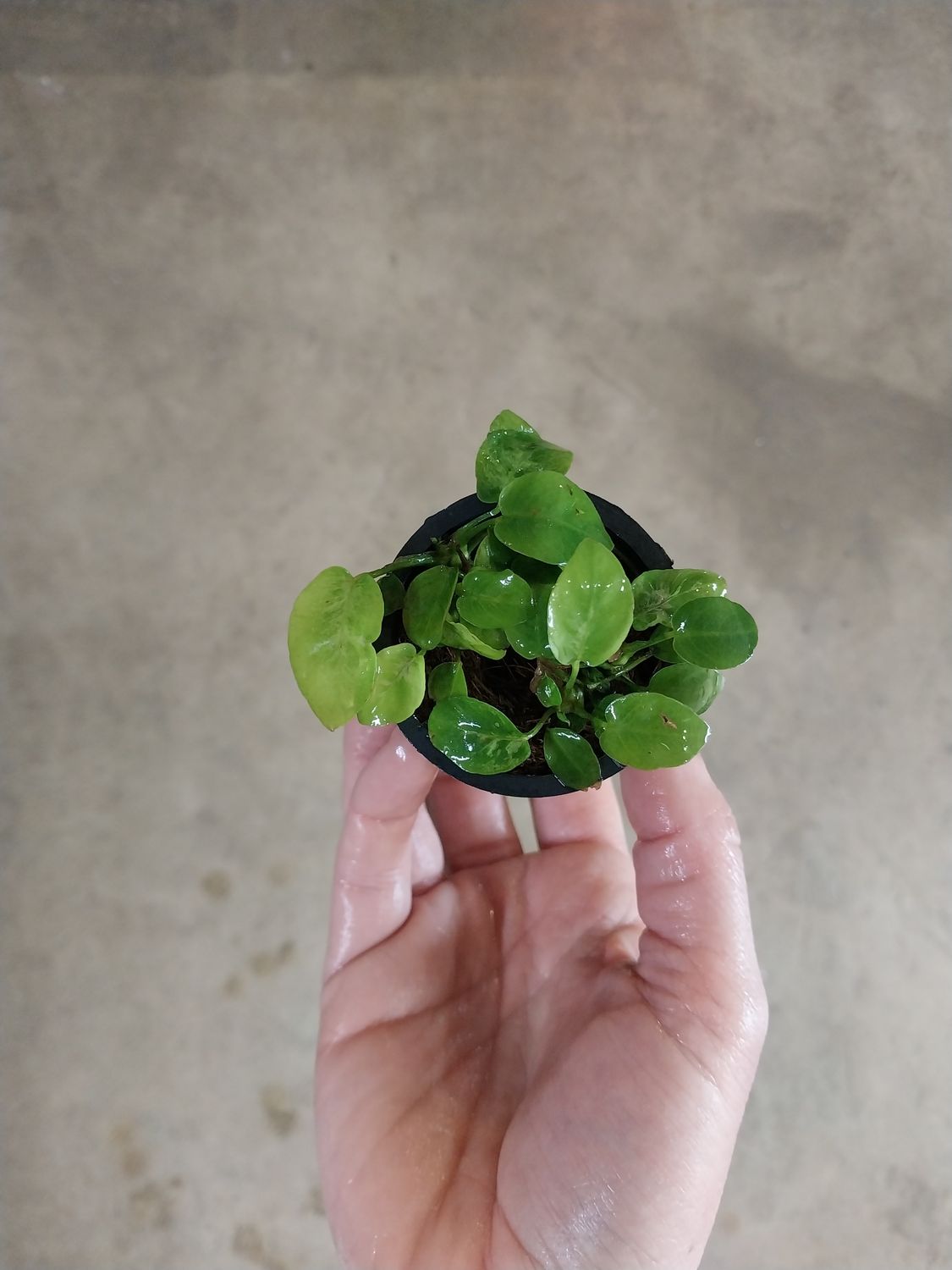Anubias nana sp.
Anubias nana sp. – Nana Anubias
Anubias nana sp. is a small, compact, and extremely hardy aquatic plant, prized for its dark green, thick leaves and slow, steady growth. Perfect for foreground or midground placement, it’s a favorite among aquascapers for creating lush, low-maintenance focal points on rocks, driftwood, or the aquarium substrate. Its petite size and tough nature make it ideal for both beginners and experienced aquarists.
Care Tips for Anubias nana sp.:
Light Requirements:
-
Thrives in low to moderate light. It tolerates low-tech conditions and does well without CO₂. Avoid intense direct light, which can encourage algae growth on the leaves.
Water Parameters:
-
Temperature: 72–82°F (22–28°C)
-
pH: 6.0–7.5
-
Hardness: Soft to moderately hard water; very adaptable
Substrate & Planting:
-
Best attached to rocks or driftwood. Avoid burying the rhizome to prevent rot. It can survive partially planted but will grow more slowly.
Growth Rate:
-
Slow-growing; requires minimal maintenance, making it ideal for aquariums where low upkeep is preferred.
Pruning:
-
Remove damaged or yellowing leaves as needed. Avoid cutting the rhizome.
Fertilization:
-
Occasional gentle dosing of liquid fertilizers can support leaf health, but Anubias nana generally does not require heavy fertilization.
Positioning in the Tank:
-
Suited for foreground or midground placement. Its compact form and dark leaves create a natural, understated focal point that complements other plants in the tank.
Interesting Facts:
-
Compact and Hardy: Anubias nana sp. is extremely resilient, tolerating fluctuations in temperature, pH, and light levels.
-
Slow Growth, Long Lifespan: Its slow growth means less frequent maintenance, and with proper care, it can live for many years.
-
Beginner-Friendly: Perfect for aquarists starting out or for low-tech setups.
-
Versatile Placement: Can be attached to driftwood, rocks, or kept partially planted, making it highly adaptable in aquascapes.
Fun Fact: Despite its small size, Anubias nana sp. is often used to create dramatic foreground accents or to highlight other plants, thanks to its dark green, glossy leaves that contrast beautifully with lighter foliage.

